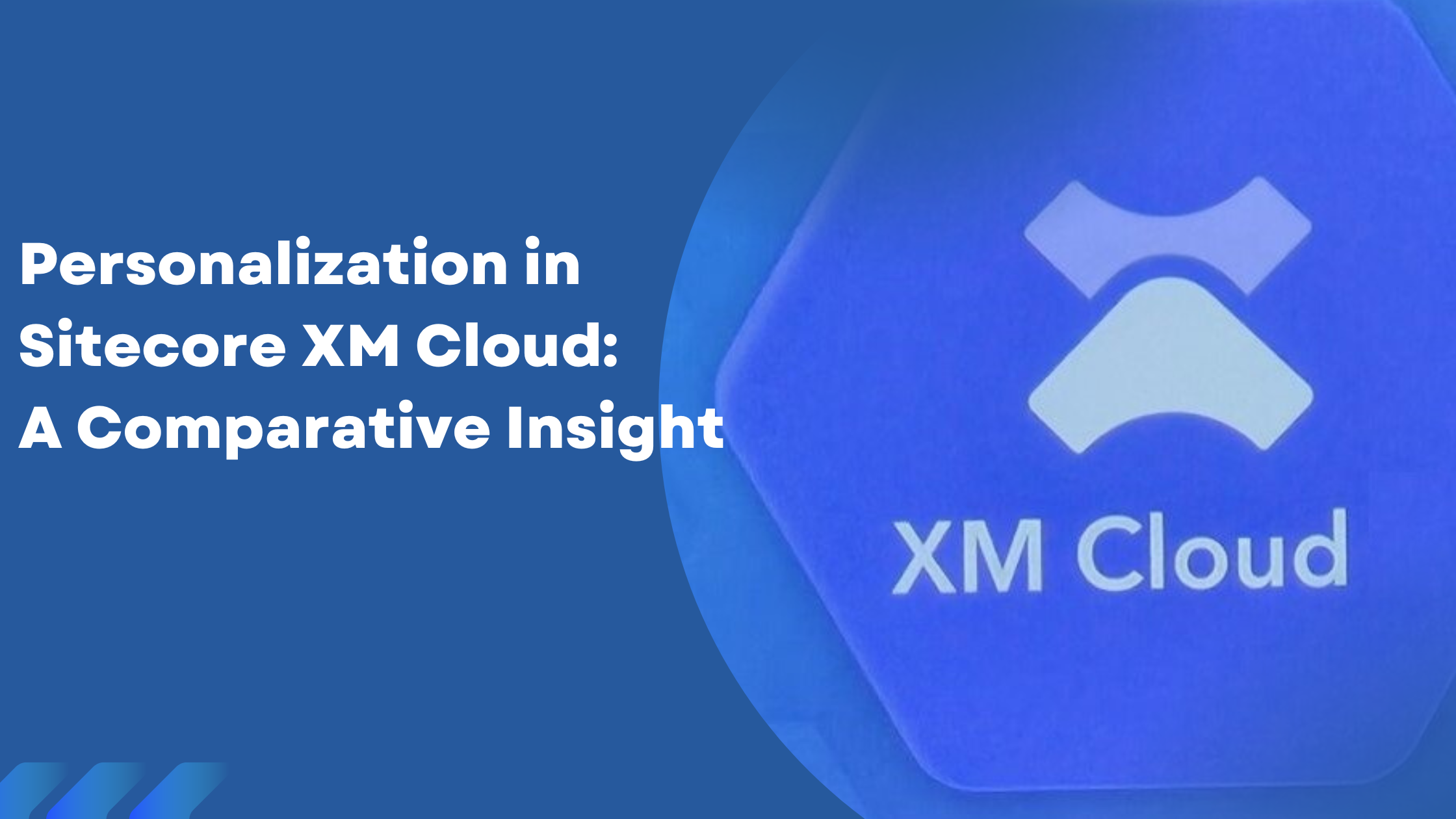Personalization in Sitecore is one of its most powerful and important features, enabling brands to deliver personalized digital experiences to end users and ensure the right content reaches the right contacts. Sitecore XP includes built-in personalization capabilities.
In recent years, the approach has shifted toward headless solutions, which offer greater flexibility, omni-channel delivery, and seamless integration with other digital systems. As a result, Sitecore XM Cloud has emerged as the next logical step for delivering modern digital experiences. However, when transitioning from Sitecore XP to XM Cloud, customers will notice some significant changes—especially in personalization features.
In this blog post, I’ll discuss the embedded personalization feature in XM Cloud, how it differs from Sitecore XP personalization, and its strengths and limitations.
XM Cloud Embedded Personalization
XM Cloud Embedded Personalization is a built-in feature that offers out-of-the-box personalization functionality, allowing marketers to target specific audience segments and tailor content based on audience behavior and characteristics. The capabilities include:
-
Real-time data stream collection
-
Predefined personalization conditions

How Personalization Works in XM Cloud
Personalization in XM Cloud is designed to be intuitive and accessible. It is applied at the page level, meaning a specific page variant is shown to a particular audience segment. This approach simplifies the content personalization process and enables marketers to implement changes quickly, without relying on developers.
Personalization in XM Cloud can be based on:
-
Site Behavior: Tailor content based on a visitor’s current behavior.
-
External Referrals: Personalize content for users coming from campaigns like social media ads or email newsletters.
-
Session Data: Deliver content based on location, device type, or browsing history.
Out of the Box Conditions for XM Cloud Personalization
You can define target audiences using any combination of the following conditions:
-
Time – Specific times of day when someone visits the page
-
Date – Specific dates, days of the week/month, or months
-
Device – Device type (e.g., mobile, desktop, tablet) and operating system (e.g., Android, iOS)
-
Geography – Country, region, or state of the visitor
-
Visit – Pages visited during the session or number of past visits
-
User Interaction – Referrer URLs, UTM parameters, and whether the user is new or returning
-
Point of Sale – Audiences that have visited multiple websites under the same site identifier
Sitecore XP Personalization vs XM Cloud Personalization
In Sitecore XP, personalization is more robust with long-term data tracking and support for complex custom rules. Marketers can configure personalization directly on components using the Rule Set Editor.
In contrast, XM Cloud uses a simplified model focusing on session-level personalization and page variants. While this reduces complexity, it also limits the depth of personalization.
Limitations
-
No Custom Conditions: Unlike XP, XM Cloud does not support custom personalization rules.
-
Variant Limits: A maximum of 8 page variants per page and 5 conditions per variant.
-
No Long-Term Tracking: Personalization is session-based; behavior is not retained across visits.
Conclusion
Sitecore XM Cloud Embedded Personalization offers a powerful, easy-to-use solution for delivering targeted content to anonymous users. With built-in real-time data collection, page variants, and analytics, marketers can personalize experiences at scale—favoring simplicity and speed.
However, for businesses requiring advanced features like identity resolution, cross-session tracking, or complex rule logic, Sitecore Personalize is a recommended upgrade. It offers deeper control, API access, and sophisticated audience targeting—ideal for delivering personalized experiences to known users.









